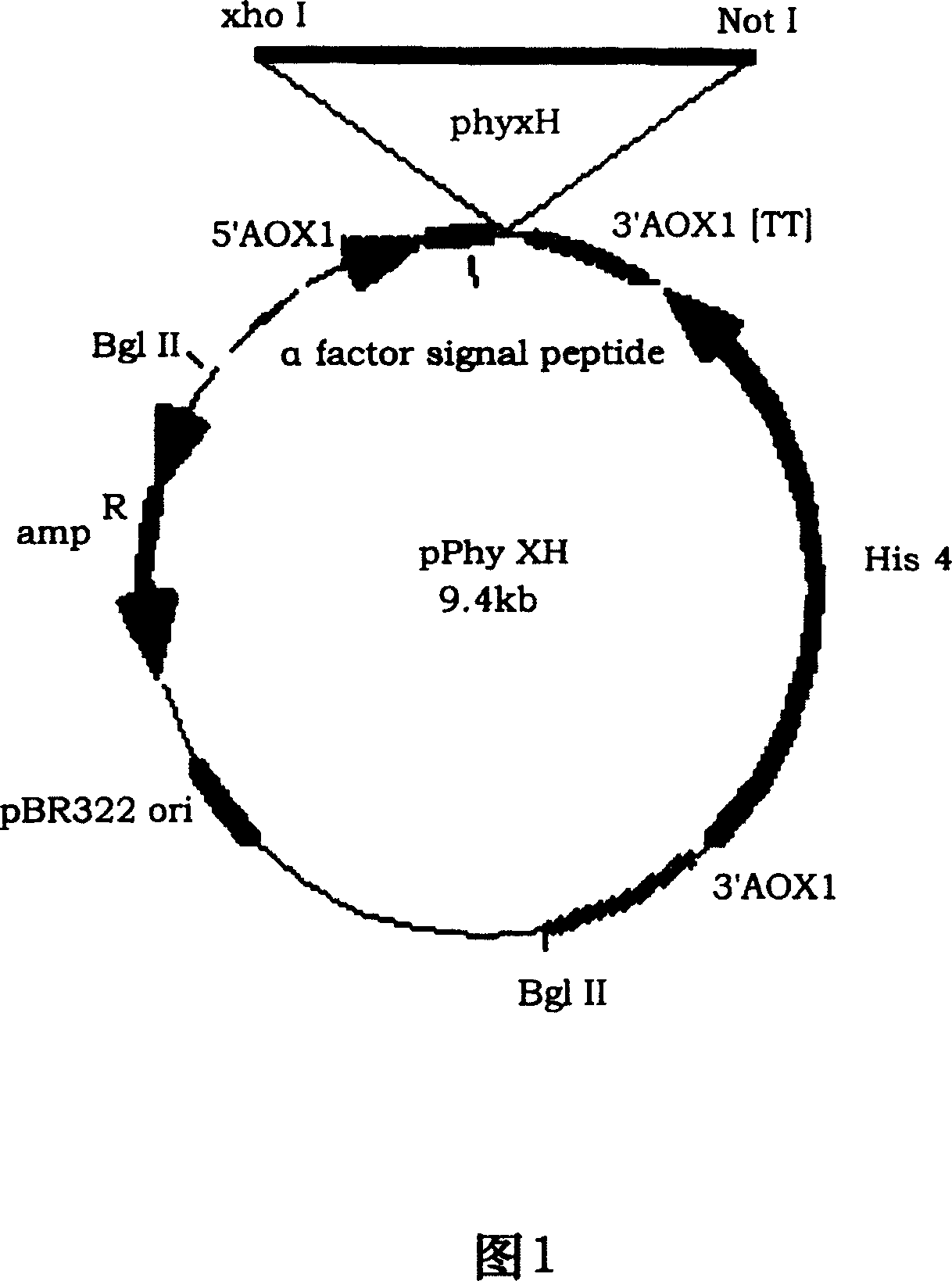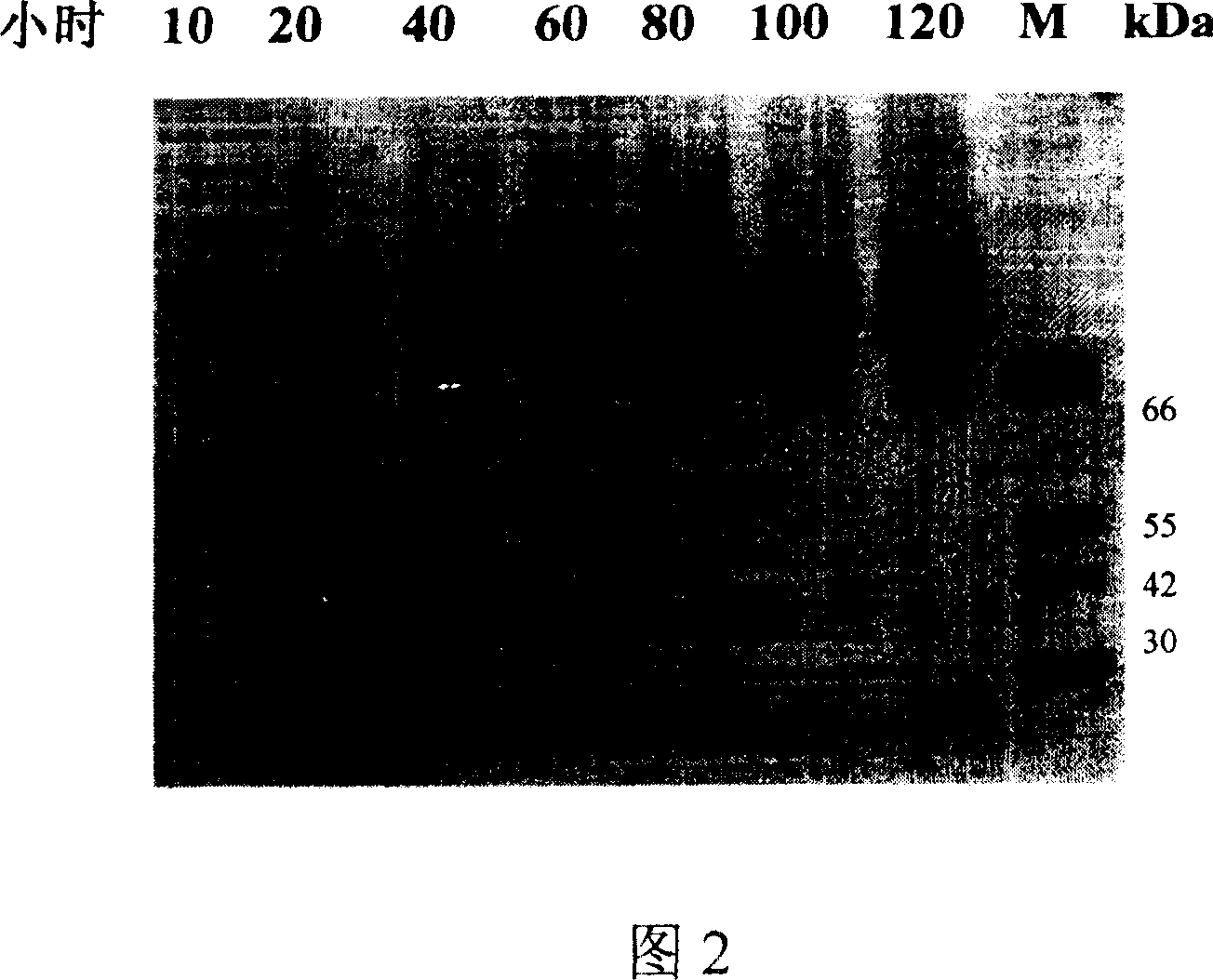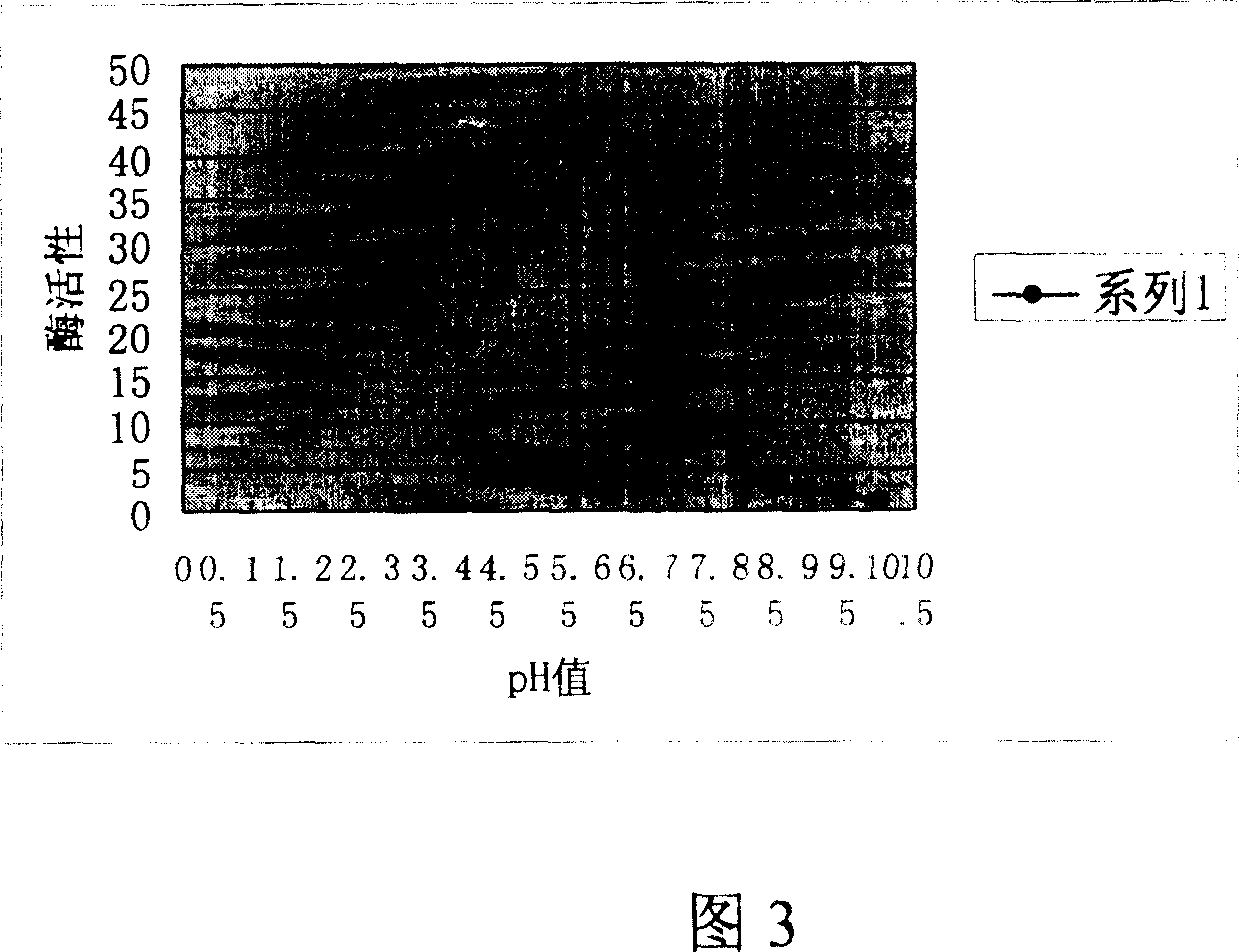Production for phytase with high living rate high temp. resisting by pichia
A technology of Pichia pastoris and phytase, applied in the field of phytase gene, can solve the problems of long time required, easy degradation of mutant strains, loss of other functions of strains and the like
- Summary
- Abstract
- Description
- Claims
- Application Information
AI Technical Summary
Problems solved by technology
Method used
Image
Examples
Embodiment 1
[0060] Embodiment 1: the chemical synthesis of phytase gene
[0061] 1.1 The phytase gene of Aspergillus fig was synthesized by serial extension PCR. The length of the primer is 70-90bp, 20 oligonucleotide primers are synthesized, the primers are connected by 20-30bp overlapping sequences, and the Tm value is 60-66. Add all primers to the reaction system, the amount of primers in the middle is 10-20ng, and the amount of primers on both sides is 100-200ng. The PCR reaction system is 100 μL. The PCR amplification conditions were 94°C, 30s; 65°C, 30s; 72°C, 2min. A total of 35 cycles were performed.
[0062] 1.2 The Escherichia coli phytase gene was synthesized by continuous extension PCR. The length of the primer is 70-90bp, 20 oligonucleotide primers are synthesized, the primers are connected by 20-30bp overlapping sequences, and the Tm value is 60-66. Add all primers to the reaction system, the amount of primers in the middle is 10-20ng, and the amount of primers on both ...
Embodiment 2
[0063] Embodiment 2: DNA molecular rearrangement (DNA Shuffling) of phytase gene
[0064]2.1PCR amplification of acid phytase gene and recovery
[0065] The high temperature resistant phytase gene was used as a template, and FphyZ1 and FphyF1 were used as primers to amplify the high temperature resistant phytase gene, FphyZ1: (5'-TTGGATCCTCCAAATCCTGCGACACCGTTGACTTG-3'); FphyF1: (5'-CGAGCTCTTAGGAGAAGCATTCACCCAGTTACCAC-3').
[0066] Use the high specific activity phytase gene as a template, phyiZ1, phyiF1 as primers to amplify the high specific activity phytase gene, phyiZ1: (5'-TTGGATCCTTGGCTGTCCCAGGCTTCCAGAAAC-3');
[0067] phyiF1: (5'-CGAGCTCTTAAGCGAAGCATTCAGCCCAGTCAC-3').
[0068] The phytase gene of Aspergillus figus was used as a template, and phyiZ1 and phyiF1 were used as primers to amplify the phytase gene, phynZ1: (5'-TTGCCTATTCCTGTCCAAAACACTTC-3'); phynF1: (5'-GAGCTCATTATTCGGAAGGAACGAAACCGCAC-3').
[0069] Using the high specific activity phytase gene as a template,...
Embodiment 4
[0083] Example 4: Yeast expression phytase vector construction
[0084] Design primers according to the sequences at both ends of the high-temperature-resistant and high-specific activity gene obtained by screening, and add an XhoI cutting point and a signal peptide cutting sequence at the 5' end of the gene. Add NotI cutting point: the primer is: PHY1F (5'-AACGCGGCCGCTTAAGCGAAGCATTCAGCCAGTCACCACCGGTAC-3'). After the amplified fragment was cloned, it was digested with XhoI and NotI, and inserted into pPIC9 vector (product of Invitrogen company) directionally to construct the yeast expression vector pPphyXH of PhyXH (Figure 1).
PUM
| Property | Measurement | Unit |
|---|---|---|
| Molecular weight | aaaaa | aaaaa |
Abstract
Description
Claims
Application Information
 Login to View More
Login to View More - R&D
- Intellectual Property
- Life Sciences
- Materials
- Tech Scout
- Unparalleled Data Quality
- Higher Quality Content
- 60% Fewer Hallucinations
Browse by: Latest US Patents, China's latest patents, Technical Efficacy Thesaurus, Application Domain, Technology Topic, Popular Technical Reports.
© 2025 PatSnap. All rights reserved.Legal|Privacy policy|Modern Slavery Act Transparency Statement|Sitemap|About US| Contact US: help@patsnap.com



